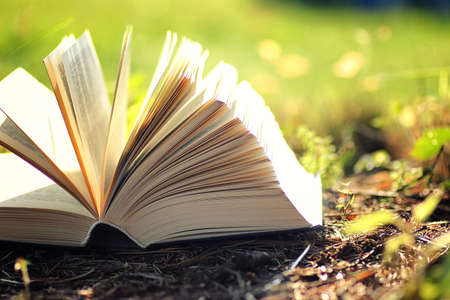Introduction to Numerology in British Culture
Beneath the rain-soaked cobblestones and ancient cathedrals of Britain lies a current of mystical inquiry that has quietly shaped its literature for centuries. Numerology, the study of numbers as carriers of spiritual significance, holds a particular allure within the British imagination. But how did this arcane wisdom arrive on these shores, and why do references to the Chaldean and Pythagorean systems whisper through so many classic works? To understand numerology’s subtle influence in British literature, one must first explore its journey from distant lands into the heart of local spiritual discourse.
Long before Newton’s equations or Shakespeare’s sonnets, numerology was a living tradition among the ancient Chaldeans—whose system imbued each number with its own distinct vibration—and among the Greeks, where Pythagoras famously declared that “all is number.” These teachings travelled across continents with traders, mystics, and scholars, eventually weaving themselves into the fabric of British culture. It was not simply mathematics that captivated the British mind; it was the belief that numbers held keys to hidden realms—insights into fate, character, and cosmic order.
As Britain evolved from pagan tribes to Christian kingdoms and onward into modernity, numerological thought adapted and persisted. The Chaldean system, with its shadowy focus on destiny and name vibrations, found resonance in medieval manuscripts and magical grimoires. Meanwhile, the clarity and philosophical depth of Pythagorean numerology appealed to Renaissance thinkers seeking harmony between science and spirituality. Thus, both systems became entwined within local traditions—subtly influencing poets, novelists, and playwrights who saw numbers as more than mere tools but as portals to deeper meaning.
2. Chaldean and Pythagorean Numerology: An Overview
The mystical art of numerology, with its roots stretching back to ancient civilisations, found fertile ground in the British Isles through two major systems: Chaldean and Pythagorean numerology. Each carries its unique essence, yet both have subtly woven their way into British literary consciousness, offering authors a language of symbols hidden beneath the surface of prose.
The Principles of Chaldean Numerology
Originating from the mysterious lands of Babylon, Chaldean numerology is steeped in spiritual intuition and esoteric wisdom. Unlike its Greek counterpart, the Chaldean system assigns values to letters based on vibrations rather than strict sequence. The numbers 1 to 8 are used, while 9 is considered sacred and reserved only for certain circumstances. This system is renowned for its focus on the inner self and destiny, often reflected in character names and themes within classic British texts.
Pythagorean Numerology: Structure and Logic
Pythagorean numerology, attributed to the ancient Greek philosopher Pythagoras, reached Britain through Roman influence and later scholarly revival during the Renaissance. This system utilises the numbers 1 to 9 in a linear fashion, assigning them sequentially to the alphabet. Pythagorean numerology appeals to order and harmony—qualities that align with rationalist currents in British literature, particularly in works exploring fate or cosmic justice.
Key Differences Between Chaldean and Pythagorean Systems
| Aspect | Chaldean | Pythagorean |
|---|---|---|
| Letter Assignment | Based on vibrational energy; not linear | Sequential (A=1, B=2, … Z=8/9) |
| Numerical Range | 1-8 (9 is sacred) | 1-9 |
| Philosophical Focus | Mysticism & Destiny | Order & Harmony |
| Cultural Influence in Britain | Migrated via Eastern mystics and occultists; found in gothic and romantic literature | Brought by classical scholars; featured in enlightenment-era texts and poetry |
The Journey to the British Isles
The historical journey of these systems into British culture began with waves of migration, trade, and intellectual curiosity. The Chaldean method arrived subtly through medieval contacts with the East—alchemists and mystics whispering secrets behind monastery walls—while the Pythagorean approach was championed by Renaissance scholars eager to rediscover lost wisdom. Over time, both approaches became part of the British literary imagination, sometimes overtly referenced and sometimes concealed like coded messages for the initiated reader.

3. Echoes of Numbers: Numerology in Shakespeare and the English Canon
There is a subtle alchemy that hums beneath the surface of classic British literature, where words are not merely vessels for meaning but also carriers of hidden numerical codes. Many of Britain’s most revered authors—including the indomitable William Shakespeare—were attuned to the mystical resonance of numbers, whether consciously or through the deep-rooted cultural osmosis of their era. In examining these texts, one finds that numerology—particularly the Chaldean and Pythagorean systems—whispers through the lines, enriching character arcs, plot structures, and thematic motifs.
Shakespeare’s works, for instance, are laced with number symbolism that extends beyond simple counting. The recurrence of the number three in plays like Macbeth (the three witches, three prophecies) evokes both ancient Celtic triads and echoes of Pythagorean sacred geometry. Three becomes a motif of fate and transformation—a doorway between worlds, as perceived by numerological traditions. Similarly, in King Lear, the division of the kingdom among three daughters can be read as a meditation on balance and chaos, an echo of how the triad represents harmony disrupted by human folly.
Other canonical authors such as Geoffrey Chaucer and John Milton also drew upon numerological themes. Chaucer’s The Canterbury Tales features pilgrims whose numbers and narrative orders reflect the symbolic completeness found in both Chaldean and Pythagorean thought. Milton’s Paradise Lost is architected with mathematical precision; its books and cantos align with cosmic numbers revered since antiquity—seven for completeness, twelve for divine order.
The English canon thus reveals itself as a living tapestry woven with threads of sacred numbers. Characters are often grouped or set apart according to numerological significance; settings are measured in ways that mirror mystical traditions; pivotal events unfold in patterns that reward those attuned to number symbolism. The reader who journeys into these works with an open heart and a keen eye may sense these echoes—a deeper rhythm pulsing beneath the poetry and prose.
This interplay between story and number invites us to see British literature not only as a mirror of society but as an energetic map connecting words, worlds, and wisdom across centuries. Through subtle numerological allusions, classic authors beckon us to look beyond the literal and discover secret harmonies coded within their masterpieces.
4. Victorian Esotericism: Numerological Motifs in 19th-century Literature
The Victorian era, often remembered for its strict social codes and rapid industrial progress, also nurtured a profound curiosity for the mystical and the occult. Amidst the smoke of burgeoning cities and the whispers of spiritualist salons, numerology—rooted in both Chaldean and Pythagorean traditions—found fertile ground within the imaginations of British writers. Far from being mere arcane trivia, numbers became vessels for deeper meaning, woven into narratives as symbols of fate, identity, and cosmic order.
Writers such as Charles Dickens, Wilkie Collins, and Oscar Wilde tapped into this cultural fascination, layering their stories with subtle numerological motifs. For example, Dickens’s use of “three” in A Christmas Carol—from the trio of spirits to the three phases of Scrooge’s transformation—echoes both Biblical tradition and the mystical significance attributed to numbers in Chaldean lore. Similarly, Collins’s The Moonstone employs numerical clues as part of its intricate plot structure, while Wilde’s The Picture of Dorian Gray invokes the number seven to reflect cycles of transformation and temptation.
Below is a table highlighting notable Victorian authors and their works where numerology plays an integral role:
| Author | Work | Numerological Reference | Cultural or Mystical Significance |
|---|---|---|---|
| Charles Dickens | A Christmas Carol | The number 3 (three ghosts) | Trinity; transformation; guidance through past, present, future |
| Wilkie Collins | The Moonstone | Sequences and coded numbers | Mystery-solving; hidden truths revealed through calculation |
| Oscar Wilde | The Picture of Dorian Gray | The number 7 (seven deadly sins) | Cyclical nature of vice; spiritual symbolism in moral decay |
| Bram Stoker | Dracula | The number 13 (date of Lucys death) | Superstition; ill-omen; association with death and rebirth |
This period saw a blending of rational inquiry with esoteric longing—a dance between science and soul that mirrored the Victorians’ own ambivalence about modernity. Numbers provided a bridge: a universal language through which authors could encode secret wisdom or hint at unseen forces shaping human destiny. Whether through overt reference or subtle structural design, numerology became both a storytelling device and an invitation for readers to look beyond surface appearances into deeper spiritual truths.
5. Modern Reflections: Numerology in 20th-century British Literature
As the twentieth century dawned, British literature entered an era of bold experimentation and spiritual inquiry, yet the ancient echoes of numerology—Chaldean and Pythagorean alike—continued to resonate beneath the surface of modern works. Authors sought new ways to infuse their writing with meaning, often drawing upon the mystical allure of numbers to shape structure, character, and theme. In the hands of writers such as Virginia Woolf and James Joyce, numbers became more than mere markers; they acted as secret signposts guiding readers through labyrinthine narratives and layered symbolism.
The Persistence of Ancient Systems
Although overt references to Chaldean or Pythagorean numerology may appear rare in twentieth-century texts, their influence lingers in subtle patterns. Woolf’s novel “To the Lighthouse,” for instance, divides itself into three distinct parts—a trinity reflecting both spiritual unity and creative cycles reminiscent of numerological thinking. Similarly, Joyce’s “Ulysses” is structured with an obsessive attention to number, from the hours of Leopold Bloom’s day to the chapters’ intricate alignment with Homeric episodes, revealing an almost sacred reverence for mathematical order.
Symbolic Codes and Literary Experimentation
Modernist writers were particularly fascinated by codes—hidden frameworks that could be unlocked by intuitive readers. The Pythagorean belief in numbers as keys to universal truth found fertile ground in T.S. Eliot’s poetry, where measured stanzas and recurring numerical motifs hint at underlying cosmic laws. Even in more popular genres, such as detective fiction by Agatha Christie, numbers serve as clues—not just in solving crimes but also in unravelling deeper existential mysteries.
Enduring Influence on Creativity
This enduring fascination with numerology underscores a distinctly British literary sensibility: a willingness to blend rational inquiry with mystical tradition. Whether through explicit allusion or covert patterning, twentieth-century authors channelled ancient systems into their creative process, inviting readers to look beyond words—to feel the pulse of hidden harmonies guiding each narrative thread. Thus, numerology remains not merely a relic of the past but a living current shaping British literary imagination well into the modern age.
6. Cultural Interpretation: British Attitudes toward Numerology in Literature
When delving into the tapestry of British literature, one uncovers a fascinating relationship between numerology and the British psyche—a dance between scepticism and enchantment that is uniquely coloured by the nation’s intellectual traditions. In classic works referencing Chaldean or Pythagorean systems, numbers are never merely mathematical symbols; they often serve as vessels for meaning, mystery, and even subtle subversion.
The Sceptic’s Stance
Britain’s famed rationalism—embodied by figures from Newton to Darwin—has long fostered an air of polite doubt towards arcane practices. The British reader might approach numerological motifs with a raised eyebrow, viewing them as charming but ultimately fanciful relics of bygone eras. This scepticism is not simply dismissive; it often manifests as a wry wit in literary critique, where authors gently lampoon or question the seriousness of mystical number systems.
Enchantment and Literary Allure
Yet, there is an undeniable enchantment woven through these texts. From the cryptic codes in Dickens’ novels to the numerical riddles scattered across Shakespeare’s plays, numerology provides a secret language—a whispered promise that life’s randomness can be deciphered. The British literary tradition delights in this tension: numbers become both keys to hidden realms and playful tools for narrative intrigue.
Intellectual Curiosity and Playfulness
Far from dismissing numerology outright, many British writers and their readers have relished its intellectual possibilities. The interplay between logic and imagination forms the heart of the British response: one finds pleasure in teasing apart meanings, tracing historical origins, and weaving speculative connections between text and tradition. In salons and studies alike, such discussions are less about belief than about exploration—a respectful nod to the past paired with a modern appetite for debate.
A Living Dialogue
This distinctive approach—a blend of curiosity, irony, and wonder—ensures that numerology endures within British literature not as dogma but as dialogue. It becomes a mirror reflecting the nation’s broader attitudes: cautious yet open-minded, analytical yet susceptible to magic. Thus, each reference to Chaldean or Pythagorean systems in classic works is more than a literary device; it is an invitation to engage with Britain’s ever-evolving conversation between reason and reverie.


